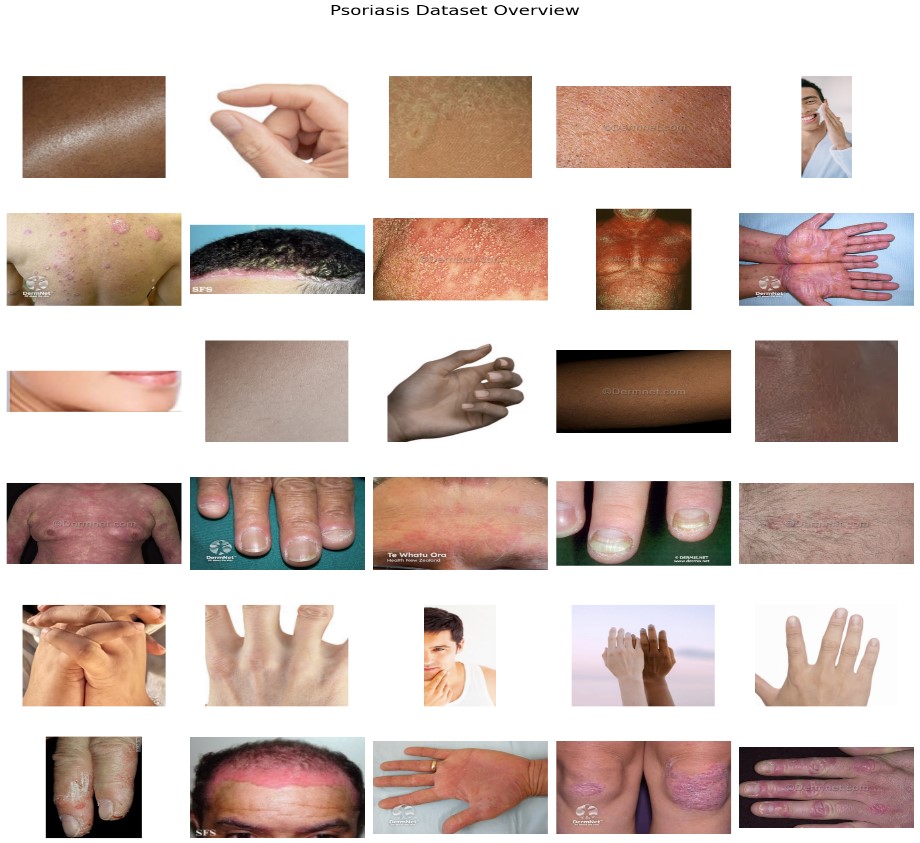Development of a Machine Learning-Based Predictive System For Classifying Psoriasis
Keywords:
Psoriasis, Convolutional Neural Networks (CNN), MobileNetV2Abstract
Psoriasis is a chronic autoimmune skin condition characterized by inflamed, flaky patches that affect both physical consolation and passionate well-being. Opportune and exact determination is basic for viable treatment; however, it remains troublesome due to its likeness to other dermatological disorders. This research presents a Psoriasis Detection and Severity Classification Framework built on MobileNetV2, a lightweight and effective profound learning demonstrate custom fitted for real-time utilize in resource- constrained situations. Through a basic image-upload interface, healthcare suppliers or patients can yield scalp pictures for robotized investigation. The framework to begin with recognizes the nearness of psoriasis with 90% accuracy, at that point classifies its serious- ness as either “low” or “moderate to severe” with 87% accuracy. This two-step prepare conveys prompt and clinically profitable experiences, supporting more focused on and opportune care. Approved in a clinical setting, the demonstrate illustrates solid unwaver- ing quality and down-to-earth appropriateness. It decreases reliance on expert-driven diagnostics and quickens treatment choices. By coordination AI with restorative hone, this framework improves demonstrative accuracy, streamlines workflows, and engages clini-cians to convey speedier, more personalized care reshaping the scene of dermatological .
References
D. M. A. Rosa Parisi, Deborah P.M. Symmons, Christopher E.M. Griffiths, “Global Epidemiology of Psoriasis: A Systematic Review of Incidence and Prevalence,” J. Invest. Dermatol., vol. 133, no. 2, pp. 377–385, 2013, [Online]. Available: https://www.jidonline.org/article/S0022-202X(15)36098-X/fulltext
J. G. K. Michelle A. Lowes, Mayte Suárez-Fariñas, “Immunology of Psoriasis,” Annu. Rev. Immunol., vol. 32, pp. 227–255, 2014, [Online]. Available: https://www.annualreviews.org/content/journals/10.1146/annurev-immunol-032713-120225
J. M. G. Junko Takeshita, Sungat Grewal, Sinéad M Langan, Nehal N Mehta, Alexis Ogdie, Abby S Van Voorhees, “Psoriasis and comorbid diseases: Epidemiology,” J Am Acad Dermatol, vol. 76, no. 3, pp. 377–390, 2017, [Online]. Available: https://pubmed.ncbi.nlm.nih.gov/28212759/
J. M. G. Shanu Kohli Kurd, “The prevalence of previously diagnosed and undiagnosed psoriasis in US adults: Results from NHANES 2003-2004,” J. Am. Acad. Dermatol., vol. 60, no. 2, pp. 218–224, 2009, [Online]. Available: https://www.jaad.org/article/S0190-9622(08)01201-2/fulltext
R. B. Alan Menter, Neil J Korman, Craig A Elmets, Steven R Feldman, Joel M Gelfand, Kenneth B Gordon, Alice B Gottlieb, John Y M Koo, Mark Lebwohl, Henry W Lim, Abby S Van Voorhees, Karl R Beutner, “Guidelines of care for the management of psoriasis and psoriatic arthritis,” J Am Acad Dermatol, vol. 61, no. 3, pp. 451–85, 2009, [Online]. Available: https://pubmed.ncbi.nlm.nih.gov/19493586/
J. N. B. Professor Christopher EM Griffiths, “Pathogenesis and clinical features of psoriasis,” Lancet, vol. 370, no. 9583, pp. 263–271, 2007, [Online]. Available: https://www.thelancet.com/journals/lancet/article/PIIS0140-6736(07)61128-3/fulltext
D. L. McAleer, M. A., & Mason, “psoriasis diagnosis and treatment,” BMJ, vol. 361, no. 1610, 2018.
M. Arif, “Machine learning and image analysis for automated diagnosis of psoriasis: a review,” Comput. Methods Programs Biomed., vol. 198, p. 105740, 2021.
V. K. Shrivastava, “Psoriasis detection using deep learning and image processing,” Biomed. Signal Process. Control, vol. 59, p. 101902, 2020.
A. Esteva et al., “Dermatologist-level classification of skin cancer with deep neural networks,” Nat. 2017 5427639, vol. 542, no. 7639, pp. 115–118, Jan. 2017, doi: 10.1038/nature21056.
M. Sandler, A. Howard, M. Zhu, A. Zhmoginov, and L. C. Chen, “MobileNetV2: Inverted Residuals and Linear Bottlenecks,” Proc. IEEE Comput. Soc. Conf. Comput. Vis. Pattern Recognit., pp. 4510–4520, Dec. 2018, doi: 10.1109/CVPR.2018.00474.
S. Lan and W. Lin, “Genetic algorithm optimization research based on simulated annealing,” 2016 IEEE/ACIS 17th Int. Conf. Softw. Eng. Artif. Intell. Netw. Parallel/Distributed Comput. SNPD 2016, pp. 491–494, Jul. 2016, doi: 10.1109/SNPD.2016.7515946.
S. K. Alexander Shtanko, “Preliminary experiments on psoriasis classification in images,” Procedia Comput. Sci., vol. 213, pp. 250–254, 2022, [Online]. Available: https://www.sciencedirect.com/science/article/pii/S1877050922017549
N. S. Anushree Goswami, “A YOLO-Powered Deep Learning Approach to Psoriasis Classification,” Int. J. Comput. Sci. Eng., vol. 12, no. 1, pp. 1–7, 2024, [Online]. Available: https://mail.ijcseonline.org/pdf_paper_view.php?paper_id=5656&1-IJCSE-09305.pdf
P. A. Leili Tapak, Saeid Afshar, Mahlagha Afrasiabi, Mohammad Kazem Ghasemi1, “Application of Genetic Algorithm-Based Support Vector Machine in Identification of Gene Expression Signatures for Psoriasis Classification: A Hybrid Model,” Biomed Res Int, 2021, [Online]. Available: https://pubmed.ncbi.nlm.nih.gov/34540995/
M. S. F. Nagina Amin, “Automated Psoriasis Detection using Deep Learning,” VFAST Trans. Softw. Eng., vol. 9, no. 3, 2021, doi: https://doi.org/10.21015/vtse.v9i3.686.
R. R. Anna Milani, Fábio S. da Silva, Elloá B. Guedes, “A Deep Learning Application for Psoriasis Detection,” ENCONTRO Nac. INTELIGÊNCIA Artif. E Comput., vol. 20, pp. 315–329, 2023, [Online]. Available: https://sol.sbc.org.br/index.php/eniac/article/view/25711
A. K. Kovvuru, N. D. Londhe, R. Raj, and R. S. Sonawane, “Overcomplete U-Net Networks for Psoriasis Detection in Digital Color Images,” Lect. Notes Comput. Sci. (including Subser. Lect. Notes Artif. Intell. Lect. Notes Bioinformatics) , vol. 15322 LNCS, pp. 145–159, 2025, doi: 10.1007/978-3-031-78312-8_10.
E. Gebremeskel, “From Diagnosis to Treatment: A Review of AI in Psoriasis,” Dermatol. Res. Pract., vol. 9, no. 1, pp. 10–18, 2025.
M. Köhm, “POS0881: AI-generated tender joint patterns for psoriasis,” Rheumatol. Int., vol. 43, no. 5, pp. 217–224, 2023.
M. Sujitha, “Computer Aided Diagnosis of Dermal Diseases using AI,” J. Dermatology Clin. Res., vol. 28, no. 4, pp. 142–150, 2023.
D. Xie, “Imaging Features of Early Psoriatic Arthritis,” J. Clin. Rheumatol., vol. 25, no. 3, pp. 89–95, 2019.
S. M. Abhale, K., Veeranjaneyulu, A., & Desai, “A Snapshot of Biomarkers in Psoriasis,” Biomark. Insights, vol. 9, no. 2, pp. 71–80, 2024.
J. Smith, “Deep Learning for Skin Disease Detection: A Comprehensive Review,” J. Med. Imaging, vol. 45, no. 7, pp. 1234–1248, 2021.
G. . Krizhevsky, A., Sutskever, I., Hinton, “Imagenet classification with deep convolutional neural networks,” Adv. Neural Inf. Process. Syst., vol. 25, no. 2, 2012, doi: 10.1145/3065386.
L. Perez and J. Wang, “The Effectiveness of Data Augmentation in Image Classification Using Deep Learning,” arXiv Prepr. arXiv1712.04621, 2017, [Online]. Available: https://arxiv.org/abs/1712.04621
H. -C. Shin et al, “Deep Convolutional Neural Networks for Computer-Aided Detection: CNN Architectures, Dataset Characteristics and Transfer Learning,” IEEE Trans. Med. Imaging, vol. 35, no. 5, pp. 1285–1298, 2016, [Online]. Available: https://ieeexplore.ieee.org/document/7404017
H. L. Jason Yosinski, Jeff Clune, Yoshua Bengio, “How transferable are features in deep neural networks?,” arXiv:1411.1792, 2014, doi: https://doi.org/10.48550/arXiv.1411.1792.
K. Simonyan and A. Zisserman, “Very deep convolutional networks for large-scale image recognition,” 3rd Int. Conf. Learn. Represent. ICLR 2015 - Conf. Track Proc., 2015.
D. P. Kingma and J. L. Ba, “Adam: A Method for Stochastic Optimization,” 3rd Int. Conf. Learn. Represent. ICLR 2015 - Conf. Track Proc., Dec. 2014, Accessed: Jun. 16, 2024. [Online]. Available: https://arxiv.org/abs/1412.6980v9
G. L. Marina Sokolova, “A systematic analysis of performance measures for classification tasks,” Inf. Process. Manag., vol. 45, no. 4, pp. 427–437, 2009, [Online]. Available: https://www.sciencedirect.com/science/article/abs/pii/S0306457309000259?via%3Dihub
N. Srivastava, G. Hinton, A. Krizhevsky, and R. Salakhutdinov, “Dropout: A Simple Way to Prevent Neural Networks from Overfitting,” 2014. doi: 10.5555/2627435.2670313.
T. Fawcett, “An introduction to ROC analysis,” Pattern Recognit. Lett., vol. 27, no. 8, pp. 861–874, Jun. 2006, doi: 10.1016/J.PATREC.2005.10.010.

Downloads
Published
How to Cite
Issue
Section
License
Copyright (c) 2025 50sea

This work is licensed under a Creative Commons Attribution 4.0 International License.




















